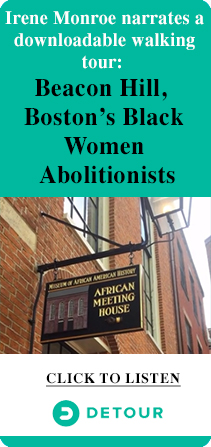On this the fifth anniversary of the Haiti Earthquake the main branch of the Cambridge Library featured Paul E. Fallon, a gay Cambridge architect specializing in healthcare design, and a new author on the subject of Haiti.
His memoir “Architecture by Moonlight: Rebuilding Haiti, Redrafting A Life” journals his biweekly trips in 2012 to Grand Goave, a town10 miles west of the quake’s epicenter that was ninety percent destroyed, and is one of the country’s oldest cities.
Fallon traveled to Grand Goave to volunteer his expertise to work on two projects-building a 19,000 sq. ft. earthquake proof orphanage named “Be Like Brit” and a Mission of Hope school, that is a Haiti-based organization with strong Massachusetts ties.
The “Be Like Brit” orphanage is in loving memory of Britney Gengel, 19, of Rutland, MA, who traveled with her college, Lynn University, to Haiti. Bubbling over with enthusiasm of working at an orphanage Britany wrote her mom the following text:
“They love us so much and everyone is so happy. They love what they have and they work so hard to get nowhere, yet they are all so appreciative. I want to move here and start an orphanage myself.”
Britney penned the text just hours before the devastating 7.0 earthquake hit and would take her life. And in not wanting their daughter’s memory as well as efforts to die in van the Gengel family contacted Fallon. “My daughter’s text is my mission. I want to open the orphanage on the first anniversary of the earthquake,” Len Gengel told Paul.
The death toll of human life from the earthquake could be considered unfathomable anyplace in the world except Haiti.
“We’ll never know how many died,” Fallon told the Cambridge Library audience. ” Precise statistics are difficult in that imprecise country. The official toll is 316,000. Other estimates are smaller but remain in the six figures. A month after the Haiti disaster, Chile experienced an 8.8 magnitude earthquake that claimed 523 lives, a count as precise as Chile’s stringent building codes. The comparative math from these two events is staggering: Chile’s earthquake was 60 times more powerful than Haiti’s, yet Haiti suffered 500 times more deaths.”
As the poorest country in the western hemisphere Haiti didn’t have much before the quake, and what little it had had now been taken away. And the devastation from the quake was largely due to a weak infrastructure with no building codes.
“From my particular perspective, Haiti also needs to adopt – and enforce – building codes. Codes would require better construction materials and improve construction practices. The increased cost of higher standards would eventually be absorbed by an expanding economy. And many more children would be protected against the next earthquake than our school and orphanage can ever shelter,” Fallon stated.
I learned of Fallon’s trips to Haiti in the most unlikely of places—Bikram (hot) Yoga in Harvard Square. Wearing an Hôpital Albert Schweitzer Haiti t-shirt in the hot room one day he came over to my mat and we bonded.
But Judson Evans, Director of Liberal Arts at Boston Conservatory, and an African-American gay male with roots in Haiti, posed the question, in his review “Translating the Heart” of Fallon’s book, many wondered about Paul’s trips.
“Why, exactly is a middle age gay father with an admitted obsession with efficiency, detail, and perfectionism so invested in a native culture equally averse to both homosexuality and the Protestant work ethic?”
Paul’s answer: “We presume a black evangelical preacher, a conservative developer, and a gay architect share no common ground. But that assumption is not only wrong, it denies the inspired solutions that can only come from diverse collaboration. Haiti is such a desperate place…anyone willing to roll up his sleeves against the overwhelming need is welcome.”
Surprisingly, Fallon’s memoir of his time in Haiti is much more than “Plastic Sheathing,” “Steel Reinforcing,” “Bulldozers,” and “Buckets and Wheelbarrows”— all chapter titles.
“Architecture by Moonlight” is a rich and poignant spiritual narrative weaving how his time in Haiti rebuilding was also a time he was redrafting his own life brick by brick.
“The events that transpire in Haiti are the stuff that happens, but the true message is in my personal growth,” Paul told me.
One reviewer on Amazon depicted Fallon’s book as “an absolutely wonderful book about the rebuilding of Haiti after the 2010 earthquake. This is “A Year in Provence” meets “Three Cups of Tea” meets “The Road Less Traveled.” Can’t recommend it highly enough.”
I couldn’t agree more.



